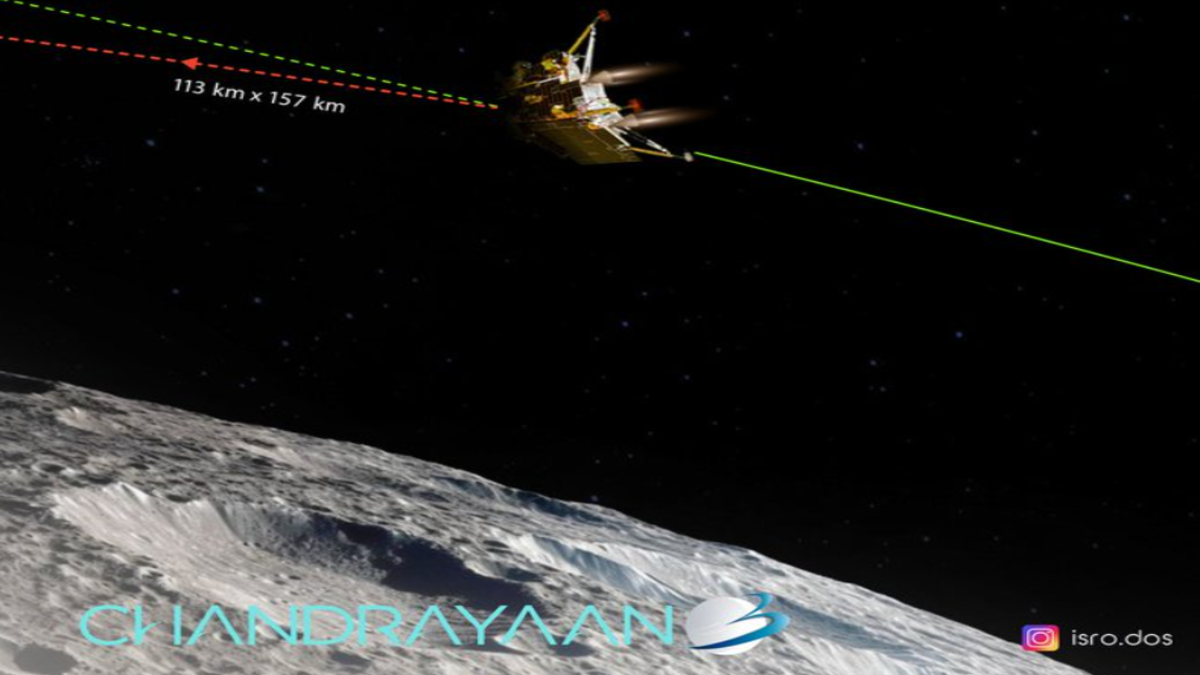
Secrets of Surprises in Chandrayaan3
Chandrayaan3 is on its way to the South Pole of the Moon and entire nation is waiting with baited breath for it to make Soft-Landing at the designated spot on 23 Aug 23. Like Chandryaan2, all eyes are on the TV screens, visualising the progress being made on daily basis. Although ISRO has been updating the nation through its social media handle and occasional briefings about the different phases of the operations, Experts in the space explorations know of some deviations taking place from time to time, minor though. This is what the Rocket Science is all about. There are bound to be surprises, the extent of which are difficult to be predicted. Those who followed up Chandrayaan2 closely over 3 yrs back, might have noticed some unintended deviations then too. The aim of the author is not to voice any shortcomings in the ISRO’s present mission whatsoever, but to highlight how effectively and efficiently the scientists have been able to overcome such issues. The secrets of some such deviations that caught the eyes of experts outside ISRO, are mentioned below. Undoubtedly many other technological challenges must have been posed by the spacecraft which the highly skilled scientists would have handled well.
The lift-off and insertion in the Earths’ Parking Orbit (EPO) were absolutely with precision, in the copy-book style. Even the first Orbit Raising Manoeuvre (ORM) was by and large flawless although the apogee of the orbit achieved possibly fell short by 3,000 Km which was not significant though. Shortcoming on 2nd ORM was significant as apogee actually lowered by 40-odd km. There was a gain of 53 Km of perigee but such ORM is seldom planned. Perigee often rises as a consequence of and concomitant to any significant rises in the apogee; as was the experience of Chandrayaan 2 too. Compared to Chandrayaan2, the apogee rises in almost all ORMs were inadequate but most experts felt it could be corrected in the next ORM but that didn’t happen. In fact, the 5th ORM didn’t take place at all and the craft was put on the Lunar Trajectory in the next manoeuvre. What surprised most that the apogee of the Lunar Trajectory fell short by over 30,000 Km. Experts prayed silently for the success of the mission and kept their fingers crossed, hidden from the public eyes. This had the potential to deviate towards its apogee that was far away from the Lunar Gravity Influence and fall back towards Earth as shown in the figure below. Knowing that Lunar Insertion on 5th Aug 23 had taken over 30 min of motor burn of the Propulsion Module, experts could guess both problems and corrections in the Lunar Trajectory and its orbit. ISRO addressed all these problems quietly without a hiss. There is no doubt that ISRO has vast experience in deep space and planetary manoeuvres.
Just like ORMs in Earth’s orbit, Chandrayaan3 has had some unexpected Moon Bound manoeuvres too that have left the Propulsion Module in an orbit of 153 x 163 Km in place of the pre-designated 100 x 100 Km. Similarly, the Deboosting manoeuvre of Phase-6 was designed to put the separated Lander module in 100 x 30 km orbit but it couldn’t be. Instead, the deboosting phase was split into two parts. In the first part it has been put into 113 x 157 Km and the next part of deboosting put it in 25 x 134 Km, much more asymmetric than the pre-designated 30 x 100 Km orbit. A low perilune is essential for two purposes. Firstly, it will position the lander exactly over the landing spot and secondly, every orbital pass from close range will permit the Lander to take high resolution picture of the designated landing spot so as to further enable the team to take a final decision on the landing spot and finalise the exact trajectory to be drawn in the Pre-Landing phase (phase-7) for the automated landing scheduled for 23 Aug 23. Experts do believe that 25 Km of perilune is a bit too close to the surface of the moon but should do no harm as there is no atmosphere there. The fewer vagabond molecules of gasses at the lower altitudes may not augment orbital decay in the next 2-3 days of pre-landing phase. It goes without saying the team ISRO has undertaken the arduous task to introduce adequate changes in the lander for the soft landing described elsewhere that should enable a soft landing if unforeseen events do not occur that are beyond the built-in redundancies in the hardware as well as software.
Whatever might have been the reasons behind the deviations in the manoeuvring of Chandrayaan3 till now, ISRO has handled it apparently well as a result of which, the craft is almost in the place where it was ought to be. What the eyes and ears of the general population like us perceive, or what the experts in the field are trying to point out, only reconfirms that it is really the Rocket Science that ISRO is dealing with. It is full of unpredictability with lot many variables. Very fact that the team of ISRO scientists are handling it well, shows their expertise, skills and competence. The nation of 1.4 billion people wishes ‘Team Chandrayaan’ the very best of all in their effort to make a soft landing on 23 Aug 23.



